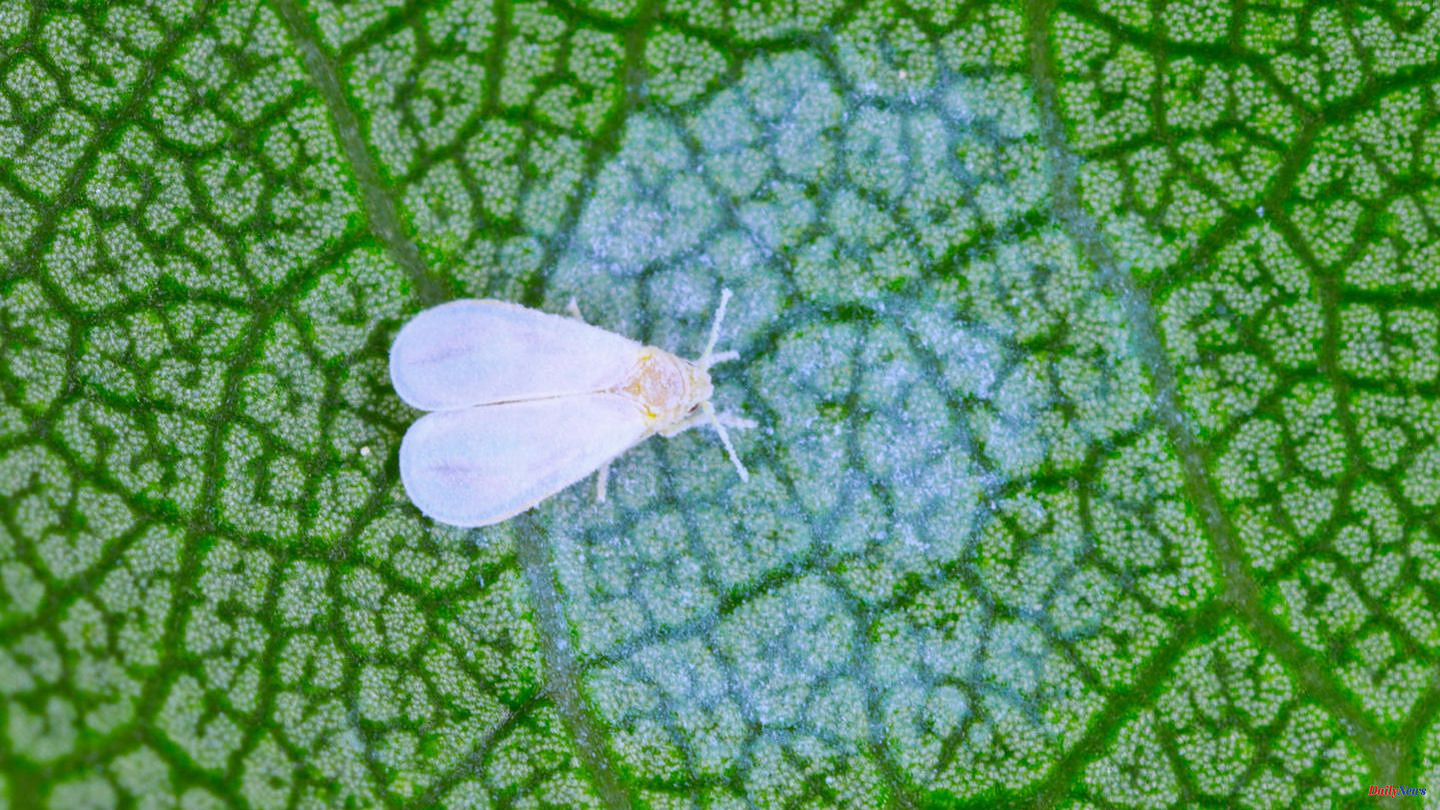Because of their white wings, the pests are at least visually reminiscent of flies, but they belong to the whitefly. There are almost 1,500 different species, of which two in particular target vegetable plants and balcony flowers in this country: the greenhouse whitefly and the cotton whitefly. On their menu are annual tomatoes and cucumbers, peppers and courgettes, but also fruit (e.g. strawberries) - or ornamental plants such as primroses, geraniums and rhododendrons. To stop the rapid multiplication, you should fight whiteflies. Read on to find out which methods are particularly effective and which indications speak for an infestation.
Whiteflies are only a few millimeters in size and have milky-white wings covered with wax dust. This is to protect the insects from moisture. The pests use their little legs to jump, for example when they touch an infested plant and the animals flee to another plant. A female is able to lay up to 400 eggs in just four weeks (insects don't live that long). Only a few days after being laid, the long, oval eggs change colour: from white-yellow to brown-black. About a week later, the first larvae begin to hatch and suck out and weaken the host plant. If the rapid reproduction of whiteflies is not stopped immediately, the leaves can die off or vegetable and ornamental plants can grow stunted.
In order to find out whether one or more plants are infested by whiteflies, you must examine the undersides of the leaves more closely: You will find millimeter-small, long and oval eggs (usually white, yellowish or green in colour) - which have been laid in a circle - or larvae the pest is already multiplying. Another indication is the fine, white wax dust that the pests carry on their wings and thus spread on the parts of the plant or the potting soil. The excretions of the white fly, also called honeydew, speak at least as clearly for an infestation: a kind of sticky film. Since both the insects and their offspring damage the plant, yellow spots spread over the leaves over time. In the worst case, the pests transmit viruses that promote fungal infestation (sooty mildew).
Another tip: if you shake the plant, you can watch the whiteflies jumping around. In that case, the evidence is clear - even if you haven't found any eggs or larvae on the undersides of the leaves.
The pests prefer warm places because they cannot withstand temperatures below zero for long. For this reason, hardy balcony plants are less endangered. However, since most types of vegetables are sown in spring and only harvested in summer or autumn, whiteflies have an easy time of it. To keep the insects out of your greenhouse or to combat an initial infestation, you can use the following (home) remedies:
Yellow boardsSo-called glue traps have a magical attraction for many pests such as fungus gnats, thrips - or even whiteflies. The yellow color attracts adult insects, but not their larvae. It is important that you only use the yellow stickers in closed greenhouses, otherwise other animals such as bees or ladybugs will also stick to them and die.
Ichneumon wasps Another way to combat whiteflies is the targeted use of parasitic wasps. The millimeter-small insects place their larvae in the eggs of the plant pests, so that new parasitic wasps hatch and no whiteflies. When there are no more eggs for the biological pest controller to parasitize, the parasitic wasps automatically disappear.
SpraysThere are whitefly insecticides that need to be sprayed on the infested area in the early morning or late evening. If you would prefer to use a natural spray, you can also make it yourself: for example with tea tree oil, more precisely ten drops in one liter of water plus one drop of washing-up liquid. Alternatively, you can also use rapeseed oil (1:3 ratio) and a drop of washing-up liquid.
And one last tip: Whiteflies also have natural enemies such as parasitic wasps, which you can attract with certain plants such as cornflowers, marigolds or wild herbs. In addition, certain herbs have a repellent effect on the pests, for example basil or thyme - a natural spray can also be made from them (as a brew).
Sources: My beautiful garden, garden journal, Utopia
This article contains so-called affiliate links. There is more information here.












